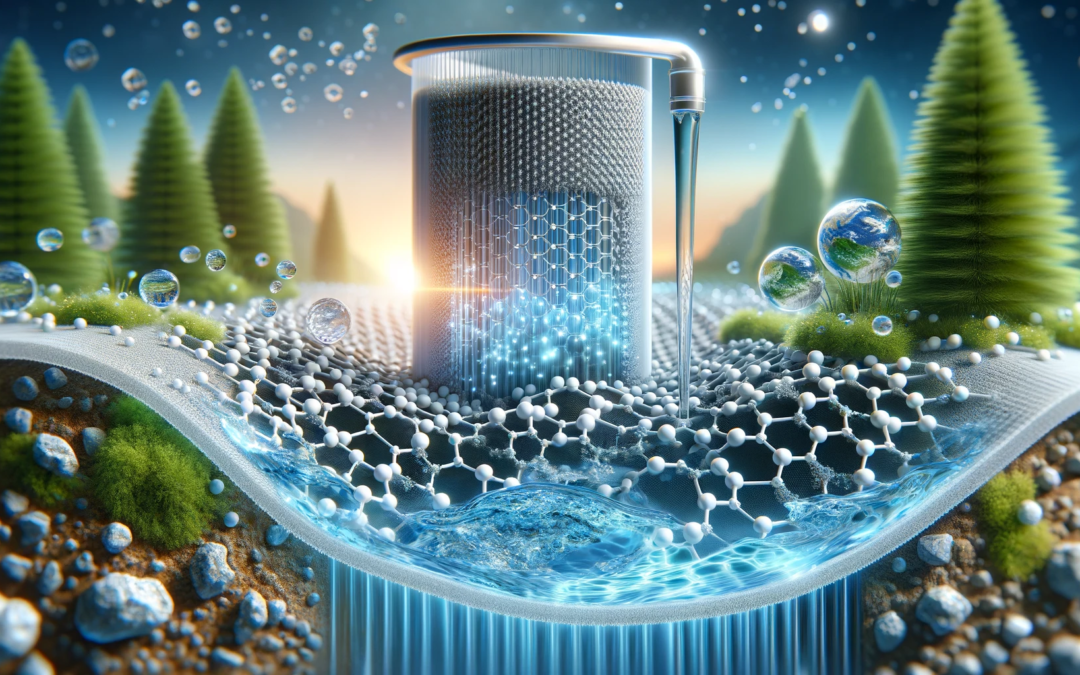In an epoch where technological advancements often seem to leap straight from the pages of science fiction into our daily lives, the realm of water purification is witnessing a monumental shift. The introduction of water filtration membranes enhanced with graphene oxide stands not merely as an advancement but as a revolution, promising a future where clean water is more accessible and purification processes are significantly more efficient.
The Genesis of Graphene Oxide in Water Filtration
Graphene, a single layer of carbon atoms arranged in a two-dimensional honeycomb lattice, has been the linchpin of numerous scientific breakthroughs since its isolation in 2004. Graphene oxide (GO), an oxidized form of graphene, has emerged as a pivotal player in water filtration due to its unique properties: its exceptional mechanical strength, chemical stability, and, most notably, its unparalleled ability to filter out contaminants.
The Mechanism: How It Works
At the heart of these new membranes is a dance of molecular ingenuity. GO sheets are integrated into traditional filtration membranes, adding layers of microscopic mazes. These mazes, or channels, are fine enough to block pollutants, pathogens, and even salt ions, making them ideal for applications ranging from desalination to the removal of trace pharmaceuticals in water.
The channels, aligned perpendicularly to the water flow, enable higher water throughput, which translates to more efficient filtration processes compared to conventional membranes.
The Implications: A Leap for Mankind and Environment
The implementation of graphene oxide in water filtration membranes heralds a series of profound implications. For one, it addresses the critical global challenge of water scarcity. By making desalination and water purification more energy-efficient and cost-effective, these membranes could provide a lifeline to regions grappling with water scarcity.
Furthermore, the environmental impact is equally significant. Traditional water purification methods often involve energy-intensive processes and the use of chemicals that can themselves be pollutants. GO-enhanced membranes promise a greener alternative, reducing both energy consumption and the reliance on chemical treatments.
Ethical and Socio-Economic Considerations
With every leap in technology comes a cascade of ethical and socio-economic considerations. The advent of GO-enhanced membranes is no exception. There’s the promise of democratizing access to clean water, particularly in underprivileged areas. However, it also raises questions about the affordability of such technologies and the potential for widening the gap between those who can afford advanced water purification methods and those who cannot.
The Road Ahead: Challenges and Opportunities
The journey from laboratory breakthrough to widespread adoption is fraught with challenges. Scalability, long-term stability of the membranes, and ensuring consistent manufacturing quality are among the hurdles that scientists and industries face. Moreover, regulatory approvals, public acceptance, and market readiness play crucial roles in determining how swiftly and widely these membranes can be adopted.
Conclusion: A Watershed Moment in Water Purification
The integration of graphene oxide into water filtration membranes isn’t just a step forward; it’s a quantum leap for both humanity and the environment. It encapsulates the quintessence of scientific ingenuity – harnessing the extraordinary to address the ordinary, turning the stuff of stars into the sustenance of life. As this technology matures and becomes more accessible, we stand on the brink of a new era in water purification, one that promises a cleaner, more sustainable future for all.










